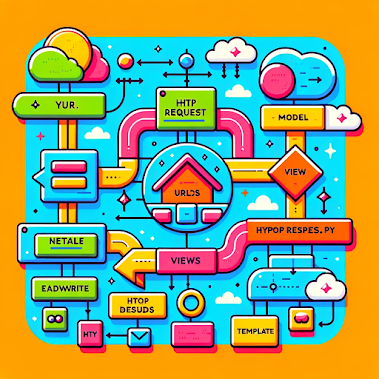The Power of Django: What It Can Do for You
what is Django
Django is a high-level Python web framework that enables the rapid development of secure and maintainable websites. Built by experienced developers, Django takes care of much of the hassle of web development, so you can focus on writing your app without needing to reinvent the wheel. It is free and open source, has a thriving and active community, great documentation, and many options for free and paid-for support.The Birth of Django
Back in 2003, Django started as an internal project at a newsroom to streamline the web development process. It was released to the public in 2005, and named after the famous jazz guitarist Django Reinhardt.
Why Choose Django?
Robust and Flexible
The goal of Django is to assist developers in building reliable, scalable applications. Django is a great option for every web development assignment, from little projects to large-scale business applications.
Secured by Design
Developers of websites frequently worry about security, and Django comes with built-in defenses against several common weaknesses, including SQL injection, cross-site scripting, HTTP request fraud, and clicking.Reliable and Strong in Features
You can create nearly any kind of website using Django, including social networks, news sites, wikis, and content management systems. For database access, it has an ORM (Object-Relational Mapping) layer, a powerful URL routing system, and a templating engine.Core Components of Django
Django is a robust Python web framework made up of multiple fundamental parts that work to enable you to develop powerful and effective web applications. Let's explore each of these components in brief:
Model-
A Django application's base is its model library. They lay out your database's structure. In a Django application, each model is a Python class that relates to a table in the database you are using. Using high-level Python code rather than SQL, models let you add, read, update, and remove records from your database.
Views-
Views take control of handling user requests with answers in Django. Between templates and models, they provide a link. A Python function that receives a request from the web and delivers a web response—or a class in the case of class-based views—is what Django views widely as. This reply may contain JSON data, a redirect, the HTML content of a page, or a 404 error.
Templates-
Templates are files that have the static portions of the HTML output you want, with the dynamic important created using the Django template language. They can be used to define the layout of a Django application's graphical user interface. In basic terms, templates are where you place your application's HTML, which Django then updates with information from the models.
URL:
A system known as the URL controller accepts a web request (a URL) and uses a particular URL pattern to send it to the correct view. It maps URLs to suitable view techniques much like a table of contents for your Django web application.
Forms:
Django Forms manages user input validation and capture as well as HTML form rendering. They are a useful tool that takes out a lot of work that is required in developing and processing HTML forms.
Admin Interface:
The admin interface of Django is a popular functionality. Based on your models, Django automatically creates an admin interface that is polished and ready for production. It gives you a quick and simple way to manage the information on your website.


